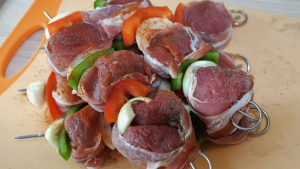The Paleolithic ketogenic diet is a modified version of the classic ketogenic diet, with a fat: protein ratio of nearly 2:1.
The concept is that the diet combines the advantages of the Paleolithic diet and the classic the ketogenic diet, helping to lower the body’s demand for insulin.1 This is designed to get the body into a state of physiologic ketosis, where fat is the primary fuel for energy instead of glucose. Insulin is not necessary for ketone metabolism by cells; hence, this switch in energy metabolism may lead to a drop in insulin levels and insulin resistance.2
A reduction in anabolic hormone insulin levels promotes weight loss. Therefore, such a diet plan primarily benefits people with obesity, diabetes and diabesity. The ketogenic diet has been in vogue for refractory epilepsy for nearly a century now.3 It has shown to be beneficial for Crohn’s disease in reversing the cluster of symptoms and abnormalities associated with the disease.3, 4
Furthermore, a case report published by Clemens et al.3 has shown that The Paleolithic ketogenic diet is effective, safe and feasible in the treatment of childhood absence epilepsy. It may result in a rapid decrease of absence seizures, improved behavior and developmental gains.
References:
- Clemens Z, Kelemen A, Fogarasi A. et al. Childhood absence epilepsy successfully treated with the paleolithic ketogenic diet. Neurol Ther. 2013;2:71–6. [PMC free article] [PubMed] [Google Scholar]
- Klonoff DC. The beneficial effects of a Paleolithic diet on type 2 diabetes and other risk factors for cardiovascular disease. J Diabetes Sci Technol. 2009;3:1229–32. [PMC free article] [PubMed] [Google Scholar]
- Gupta L, Khandelwal D, Kalra S. et al. Ketogenic diet in endocrine disorders: Current perspectives. J Postgrad Med. 2017;63:242. [PMC free article] [PubMed] [Google Scholar]
- Tóth C, Dabóczi A, Howard M. et al. Crohn’s disease successfully treated with the paleolithic ketogenic diet. Int J Case Rep Imag. 2016;7:570–8. [Google Scholar]

